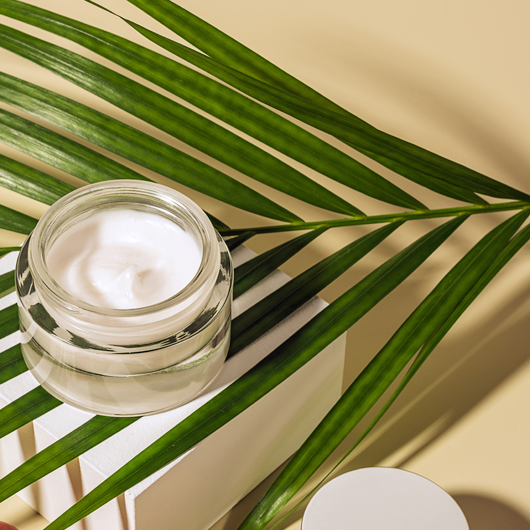2025 Summer Sunscreen Guide and Tips

While you used to get away without putting on any sunscreen before running out and playing outside, that just doesn't cut it anymore. While the risk of skin diseases such as skin cancer should indeed be considered, we all know that the sun is our worst enemy regarding looking young.
So if you're planning a fun family outing that is mainly outdoors, don't hesitate to apply, reapply, and use again.
While we all get the general gist of sunscreen and its works, modern marketing of products may have us a little confused. Every company boasts that their product is the best, leaving the consumer to only stare at arbitrary ratings of SPF and waterproof claims. While there are experts among us, most of the population may stick to the brand they've always been buying for simplicities' sake.
We've compiled some information to help you sift through the products on our summer sunscreen guide and find the right sunscreen for you!
- What's the deal with SPF? The reality is that we see SPF printed on everything to do with sun protection and sun-related products. SPF stood for Sun-Protection Factor and was developed by Franz Greiter in 1962 to measure sunscreen's capacity to block UVB radiation emitted by our sun.
- How does it work? SPF measures the length of time a sunscreen will protect your skin from reddening/ burning from UVB rays, compared to your skin doing the same without applying sunscreen. ; moderation means an SPF 15 sunscreen should protect your skin 15 times longer than what it would usually take you to start burning.
- Does it work? We all know that applying sunscreen has undoubtedly helped us prevent sunburns in the past, but how well does the product work? If used correctly, which is the big issue, the sunscreen should work as claimed. The problem is that we don't typically apply the sunscreen successfully, severely limiting the amount of protection time we get.
- How to avoid scams? The best way to avoid getting duped in the checkout line is to check for some key ingredients. This includes titanium dioxide, zinc oxide, avobenzone, and Mexoryl SX. Look for products with at least an 8-10% ingredient listing for some of these and look for sweatproof products.
There you have it! Remember to slather it on before going outside and reapply every two hours for maximum protection!
Chemicals in Sunscreen
Part of a healthy skin routine includes protecting yourself from excessive sun exposure. Did you know some of the most popular and widely used sunscreen brands in the United States contain toxic chemicals? These ingredients may be as harmful as excessive sun exposure.
This week’s compound to avoid is octinoxate. It's a common ingredient in sunscreen that only blocks ultraviolet B (UVB) rays and has also been found to have hormone-mimicking effects.
What is Octinoxate? According to the Environmental Working Group’s (EWG) in-depth study in many to most of the sunscreens offered in stores are misleadingly labeled and contain chemicals considered to be dangerous.
Enter Octinoxate or Octyl Methoxycinnamate. Octinoxate functions as a UV filter and a UV absorber. The European Commission on Endocrine Disruptors has found substantial evidence that this chemical is an Endocrine disruptor.
They are natural or synthetic chemicals that can interfere with hormone production or behavior in the human endocrine system. The EWG lists other concerns for octinoxate as including biochemical or cellular level changes, bioaccumulation, and possible non-reproductive organ system toxicity. The chemical has been found in mother’s milk, among other examples.
Synonymous names to look out for on your sunscreen bottles include:
- ETHYLHEXYL METHOXYCINNAMATE,
- 2-ETHYLHEXYL
- P-METHOXYCINNAMATE or ESTER P-METHOXYCINNAMIC ACID
- 4-METHOXYCINNAMATE
- AI3-05710
- CHRIS 6200
- EINECS 226-775-7
- ESCALON
- NEO HELIOPAN
Why do I need Sunscreen?
Is Octinoxate helpful in reducing sun exposure?
Dermatologists and the FDA recommend using a broad spectrum ultraviolet A (UVA) and UVB sunscreen to protect our skin from these harmful rays adequately. UVA rays contain about 95 percent of all UV radiation reaching the earth’s surface, shine down consistently through all daytime hours, and can even.
UVA rays penetrate the skin more deeply than UVB rays and harm skin cells in the basal layer of the epidermis, where most skin cancers occur. UVA is now thought to have a significant role in the development and growth of skin cancers. UVB rays exist in higher concentrations from around 10 a.m. to 4 p.m. during certain times of the year.
They penetrate the most superficial layers of the epidermis. And are the cause of discoloration and sunburn. They were previously thought to be the chief cause of skin cancer. Skincancer.org reports that octinoxate only covers the UVB spectrum of the sun’s rays, which leaves its wearers unprotected from the beams that make up the majority of the radiation to which we’re exposed.
Consumers shopping for sunscreen should be aware that any product listing the only octinoxate will not sufficiently protect them. They should also refer to the EWG’s guide to sunscreens for 2025. This will help make sure the product they slather daily isn’t full of toxic chemicals and provides the protection advertised.
Controversy about UVA and UVB Rays and Sunscreen
We are admonished by our dermatologists to wear sunscreen and protective clothing anytime we step out of the house. Thus, it’s no wonder we take it for granted that blocking all solar radiation is healthy. But there is a mounting body of research and evidence that suggests that UVB rays are healthful and deliver precious vitamin D to our bodies, at least in moderation.
If this research pans out, sunblocks with chemicals like octinoxate may be contributing to vitamin D deficiency. Insufficient amounts of vitamin D are associated with a laundry list of diseases. According to the study “Vitamin D: Its role in disease prevention” published in the journal, UVB rays can be quite beneficial.
The study states that some benefits of UV exposure include the following:
- UVB as Sunscreen: It is essential to block UVB rays to increase melanin in the skin.
- Heliotherapy and phototherapy: Heliotherapy is solar radiation. Phototherapy is an artificial ultraviolet that comes from LED Light. Both therapies are successful in helping those with psoriasis, atopic dermatitis, or vitiligo.
- Multiple Sclerosis: sufferers of MS have experienced relief from symptoms when exposed to sunlight.
- Nitric oxide (NO): can help improve cardiovascular health by reducing the blood pressure rate.
- Mood Enhancer: Blue light therapy is a great way to increase the release of endorphins and improve your outlook on life.
Others show similar benefits to increased vitamin D consumption, a stark contrast to traditional messages. More and more studies challenge our ideas about vitamin D consumption levels; they now recommend 1,500-2,000 UI for adults to prevent vitamin D deficiency.
At the very least, the evidence is clear that vitamin D is necessary. It's a natural substance that the human body evolved with and that it is beneficial in reducing the risk of skeletal and non-skeletal diseases.
Solutions: Sunscreen Choice and Natural Vitamin D Intake
Keeping your skin and body healthy takes daily, informed decision-making. There is enough evidence to support that moderation is the key to health, like in most things in life. It is unhealthy to spend hours on end in the sun without any sunscreen.
It is also harmful to avoid the sun altogether. But some people may have to limit their time in the sun due to particular diagnoses. For that, vitamin D is also readily available in many natural forms. You can obtain it from pills as well as directly from the sun.
Natural sources of vitamin D include fatty fish like salmon, tuna, and cod and egg yolks and mushrooms. Leaving mushrooms in the sun for a day before eating them increases their vitamin D content by 400%. There are many fortified milk and cereal options, as well.
The 5 Best Reasons Why you Should Wear Sunscreen
-
Prevents Skin Cancer: Sunscreen is vital in protecting the skin from harmful UV rays, significantly reducing the risk of skin cancers, including melanoma, which can be life-threatening.
-
Prevents Premature Aging: Regular use of sunscreen helps prevent photoaging, characterized by wrinkles, leathery texture, and sunspots. Sunscreen protects against UVA and UVB rays that cause aging signs.
-
Protects Against Sunburn: Sunburn can damage the skin, leading to redness, pain, and peeling. Repeated sunburns, especially in childhood, increase the risk of serious skin conditions later in life.
-
Maintains Even Skin Tone: Sunscreen helps prevent discoloration and dark spots from sun damage, maintaining an even skin tone.
- Enhances Skin Health: Protecting the skin's barrier and collagen is essential for maintaining overall skin health. Sunscreen helps protect essential skin proteins, such as collagen, keratin, and elastin.
What is the Right Sunscreen for Me?
Regarding choosing the right sunscreen for you, the EWG has many suggestions for great options proven to be non-toxic. Their sunscreen database is a crucial component of your decision-making process. Remember, when choosing a sunscreen, the lotion’s SPF rating may not have much to do with its ability to block UVA rays.
Some sunscreens meet the EWG’s criteria. Informing yourself daily of what you put on your skin, and ultimately into your bloodstream, is an ongoing challenge. But one we must all embrace to live healthy, happy lives.
Summer's Sizzling Secrets: 4 Quintessential Seasonal Ingredients Trends in Sunscreen
Summer is around the corner, and along with the beach trips, outdoor adventures, and sunny escapades, it's essential to have your sunscreen game strong. While sunscreen has been a staple in our summer skincare routine for years, the trends are ever-evolving, and this season brings us four quintessential ingredients trends in sunscreen that you won't want to miss out on!
Blue Light Sunscreen: In our tech-driven world, exposure to blue light from screens and devices is nearly unavoidable. This is where blue light sunscreen comes to the rescue. It contains iron oxide, a powerhouse ingredient that effectively blocks blue light, safeguarding your skin from the potentially harmful effects of excessive screen time. Not only does it protect, but it also keeps your skin looking radiant and healthy.
Ceramide Sunscreen: Sunscreen is not just about sun protection; it's also about nourishing your skin. Ceramide sunscreen offers broad-spectrum protection against both UVA and UVB rays while replenishing your skin's natural ceramide levels. Ceramides are like the building blocks of your skin's barrier, helping it stay strong and resilient. This sunscreen is your ultimate summer skincare multitasker.
Birch Juice Sunscreen: Birch juice, a natural and mildly sweet liquid extracted from birch trees, has been enjoyed as a traditional beverage and health tonic for centuries in various parts of the world. What's exciting is that birch juice is making waves in the sunscreen world due to its UV protection properties. Startups are creating birch juice-based sunscreens, and the demand is on the rise. Birch juice sunscreen is becoming a go-to choice for those looking for natural UV protection.
Glowing Sunscreen: Why settle for regular sunscreen when you can have glowing skin too? Glowing sunscreen, as the name suggests, not only shields your skin from harmful rays but also leaves it with a pearlescent finish. It's the perfect choice for those summer days when you want to shine and shimmer while staying protected. Glow on!
Benefits of Embracing These Trends
-
Enhanced Protection: Each of these specialty sunscreens offers unique benefits while providing the essential protection your skin needs against the sun's harmful rays.
-
Nourishment: Ceramide sunscreen ensures your skin receives the care it deserves while shielding it from UV damage. Your skin stays protected and well-nourished.
-
Natural Defense: Birch juice sunscreen brings a natural element to sun protection, harnessing the power of nature to shield your skin from the sun.
-
Radiant Skin: Glowing sunscreen not only protects but also adds a touch of radiance to your complexion, helping you look your best during those sunny summer days.
So, as you gear up for your summer adventures, make sure to explore these exciting sunscreen trends. Whether you opt for blue light, ceramide, birch juice, or glowing sunscreen, you're sure to enjoy the benefits of these innovative and effective skincare solutions. Stay safe, stay radiant, and make the most of your summer in the sun!
References:
- Skin Cancer Foundation. "Sunscreen 101." https://www.skincancer.org/skin-cancer-prevention/sun-protection/sunscreen/
- EWG. "2025 Guide to Sunscreens." https://www.ewg.org/sunscreen/report/executive-summary/
- The European Commission on Endocrine Disruptors. https://ec.europa.eu/environment/chemicals/endocrine/pdf/final_report_2007.pdf
- American Academy of Dermatology. "Sunscreen FAQs." https://www.aad.org/public/everyday-care/sun-protection/sunscreen-patients/sunscreen-faqs
- Skincancer.org. "UVA & UVB." https://www.skincancer.org/skin-cancer-prevention/uva-and-uvb/
- Harvard Health Publishing. "Vitamin D: Its role in disease prevention." https://www.health.harvard.edu/staying-healthy/vitamin-d-and-your-health-august-2019








